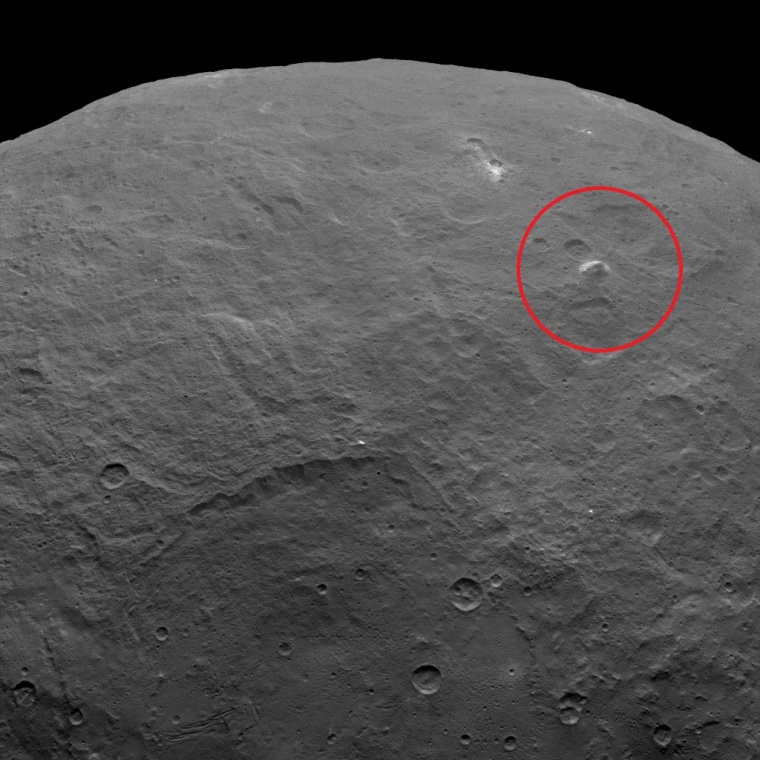NASA's Dawn spacecraft has beamed home the best-ever photo of the mysterious bright spots that speckle the surface of the dwarf planet Ceres.
The new image resolves Ceres' strange spots, which are found inside a crater about 55 miles (90 kilometers) wide, into a cluster composed of several patches, some of which were not visible in previous photos. But it doesn't solve the mystery of the spots' origin and composition.
"At least eight spots can be seen next to the largest bright area, which scientists think is approximately 6 miles (9 kilometers) wide," NASA officials wrote in a statement on Monday. "A highly reflective material is responsible for these spots — ice and salt are leading possibilities, but scientists are considering other options, too." [More Photos of the Dwarf Planet Ceres]
Dawn captured the photo on June 9 from a distance of 2,700 miles (4,400 kilometers) — the altitude of its second mapping orbit of Ceres. Additional newly released photos taken from this orbit show other intriguing features, including a steep-sided mountain that rises about 3 miles (5 kilometers) from the dwarf planet's heavily cratered surface and has been nicknamed the "pyramid."

"The surface of Ceres has revealed many interesting and unique features. For example, icy moons in the outer solar system have craters with central pits, but on Ceres central pits in large craters are much more common," Dawn deputy principal investigator Carol Raymond, of NASA's Jet Propulsion Laboratory in Pasadena, California, said in the same statement. "These and other features will allow us to understand the inner structure of Ceres that we cannot sense directly."
The $473 million Dawn mission was launched in 2007 to investigate Ceres and Vesta. At 590 miles (950 kilometers) and 330 miles (530 kilometers) wide, respectively, they're the two largest objects in the main asteroid belt between Mars and Jupiter.
Dawn orbited Vesta from July 2011 through September 2012. The probe arrived at Ceres this past March, in the process becoming the first spacecraft ever to orbit a dwarf planet, On June 30, Dawn will start spiraling down to ever-closer orbits.
This is a condensed version of a report from Space.com. Read the full report. Follow Mike Wall on Twitter and Google+. Follow Space.com on Twitter, Facebook or Google+.